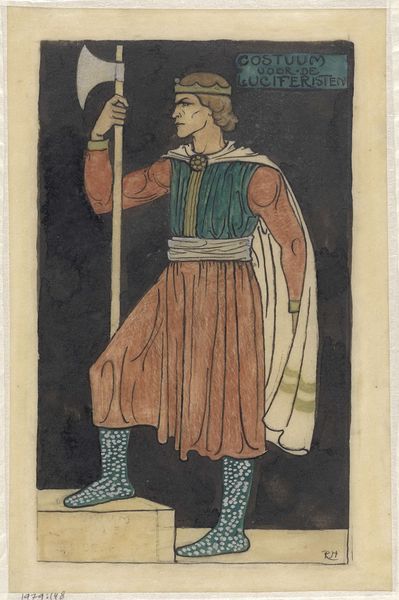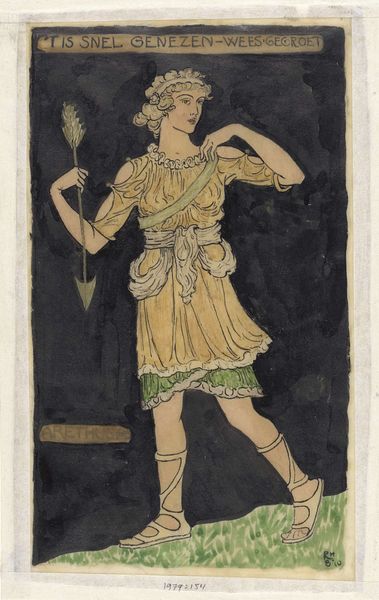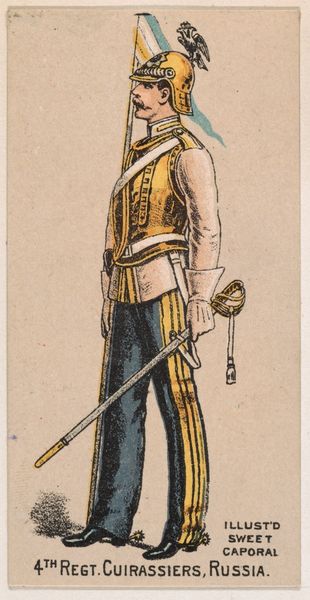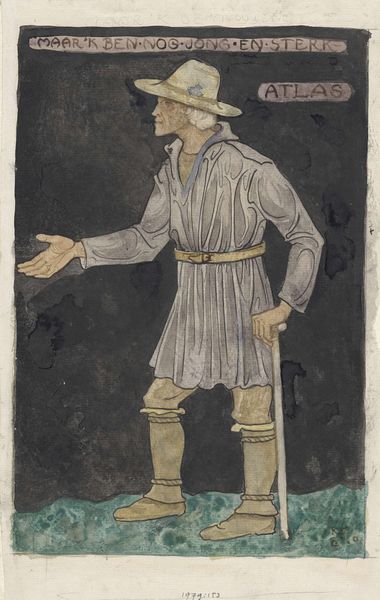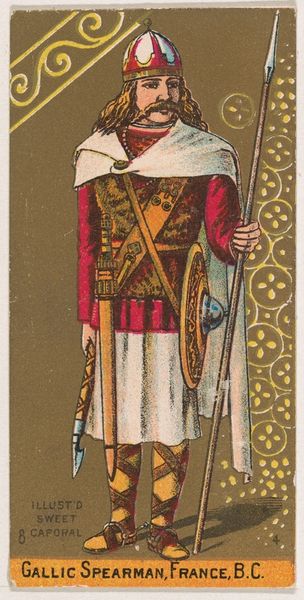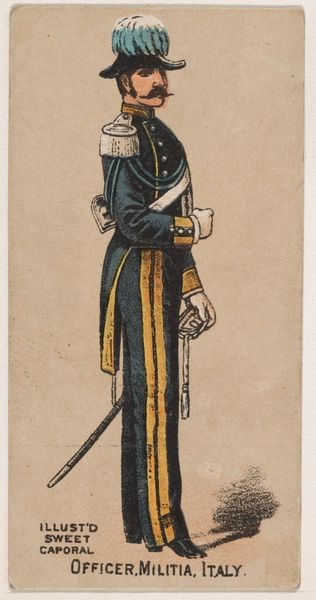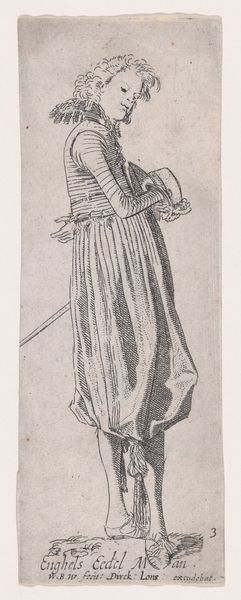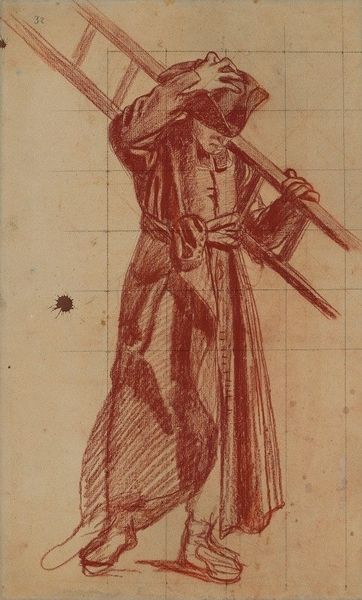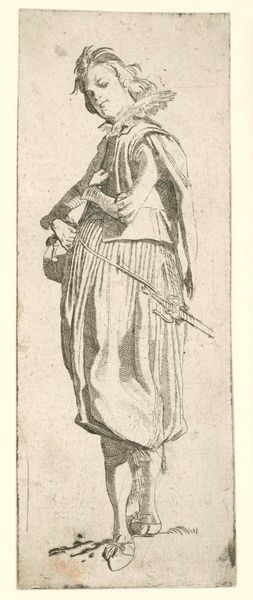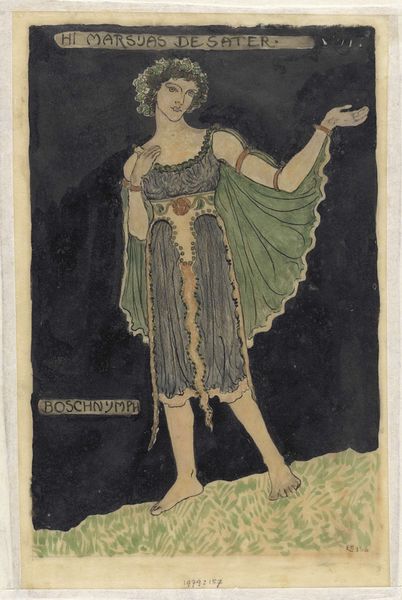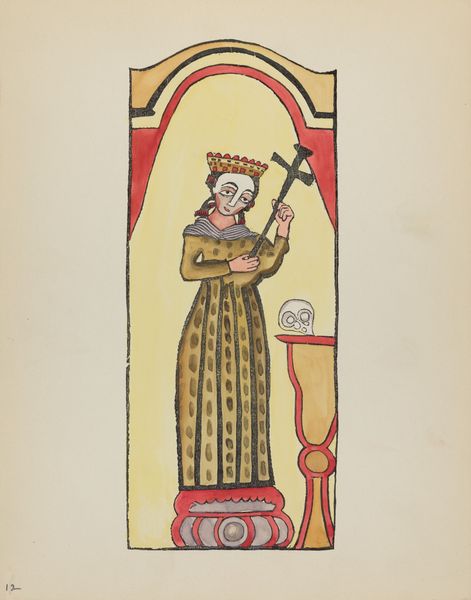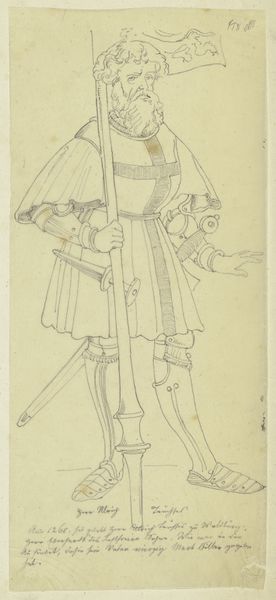
drawing, coloured-pencil, watercolor
#
portrait
#
drawing
#
coloured-pencil
#
caricature
#
figuration
#
watercolor
#
coloured pencil
#
symbolism
#
watercolour illustration
Dimensions: height 338 mm, width 212 mm
Copyright: Rijks Museum: Open Domain
Editor: Here we have Richard Holst’s “Ontwerp voor kostuum voor Lucifer,” a drawing created sometime between 1878 and 1938, rendered in watercolor and coloured pencil. The dark backdrop and somewhat severe expression give him a chilling demeanor, despite the bright costume. What can you tell us about the artistic qualities of this piece? Curator: Note how the artist emphasizes line. Vertical lines articulate the garment while curved lines form patterns on the sleeves and decorative elements. Holst uses contrasting light and dark washes of colour to describe form and create visual interest, especially in the articulation of light and shadow within the robes. The design displays a deliberate symmetry in the arrangement of the figure, do you see it too? Editor: Yes, the symmetry is clear, particularly in the placement of the hands and the details of his clothing. The blues, golds, and cream colour palette contributes to the visual balance as well. Why do you think Holst used those colours? Curator: These colour choices construct an aesthetic of antiquated royalty while simultaneously conveying symbolic meaning. Consider the dark backdrop against the gold ornamentation – the painting becomes a study in contrasts. Editor: I see how those contrasts can give a sense of Lucifer's duality – light and dark, power and mystery. It’s interesting to focus on just those formal elements and see how much they contribute to the character. Curator: Indeed, a rigorous attention to formal properties reveals much about the artwork’s intended effect, how colours and contrasts enhance Lucifer's ambiguous character. Editor: It's a new way for me to look at art and appreciate what is displayed to the observer.
Comments
No comments
Be the first to comment and join the conversation on the ultimate creative platform.
